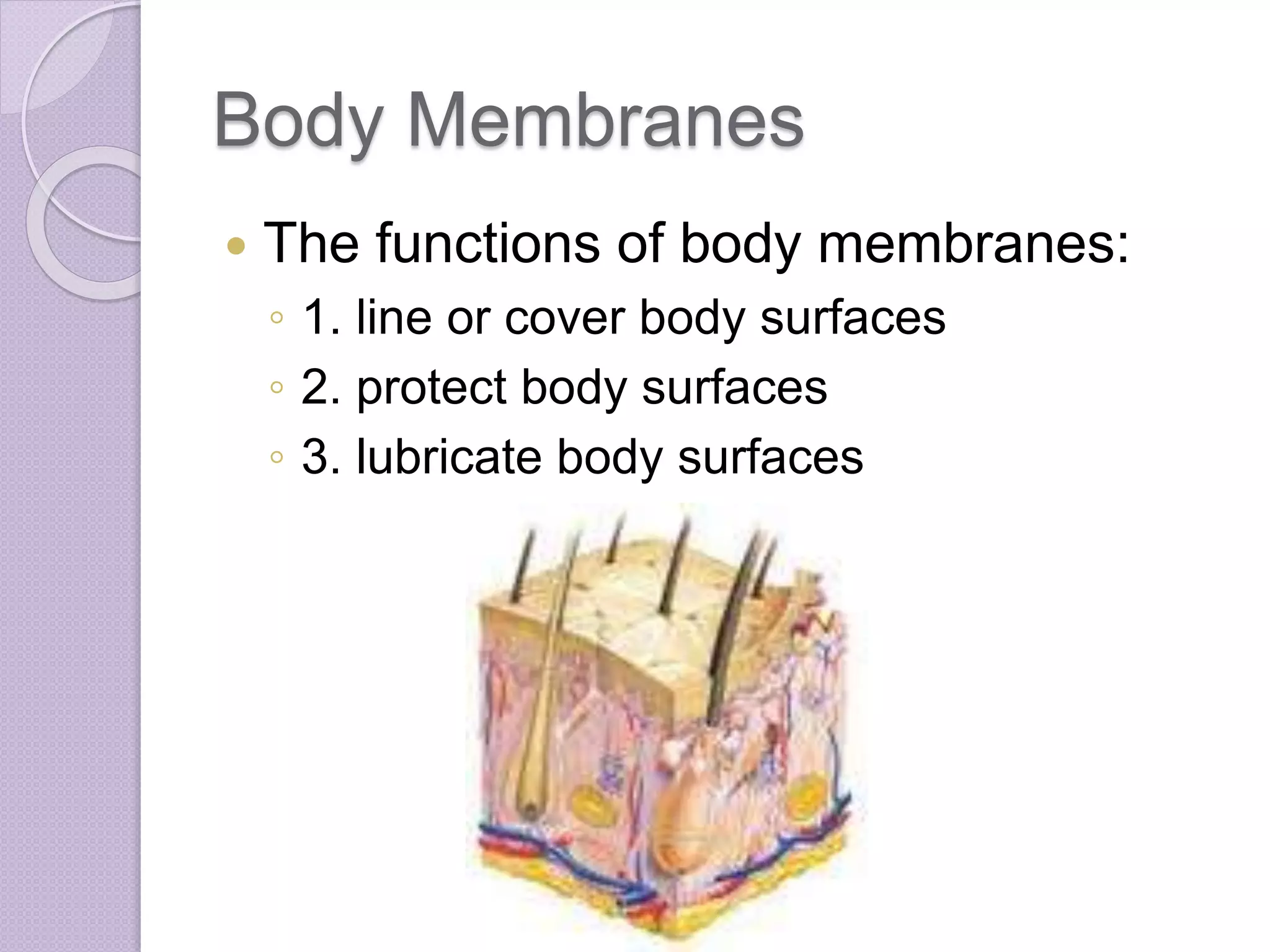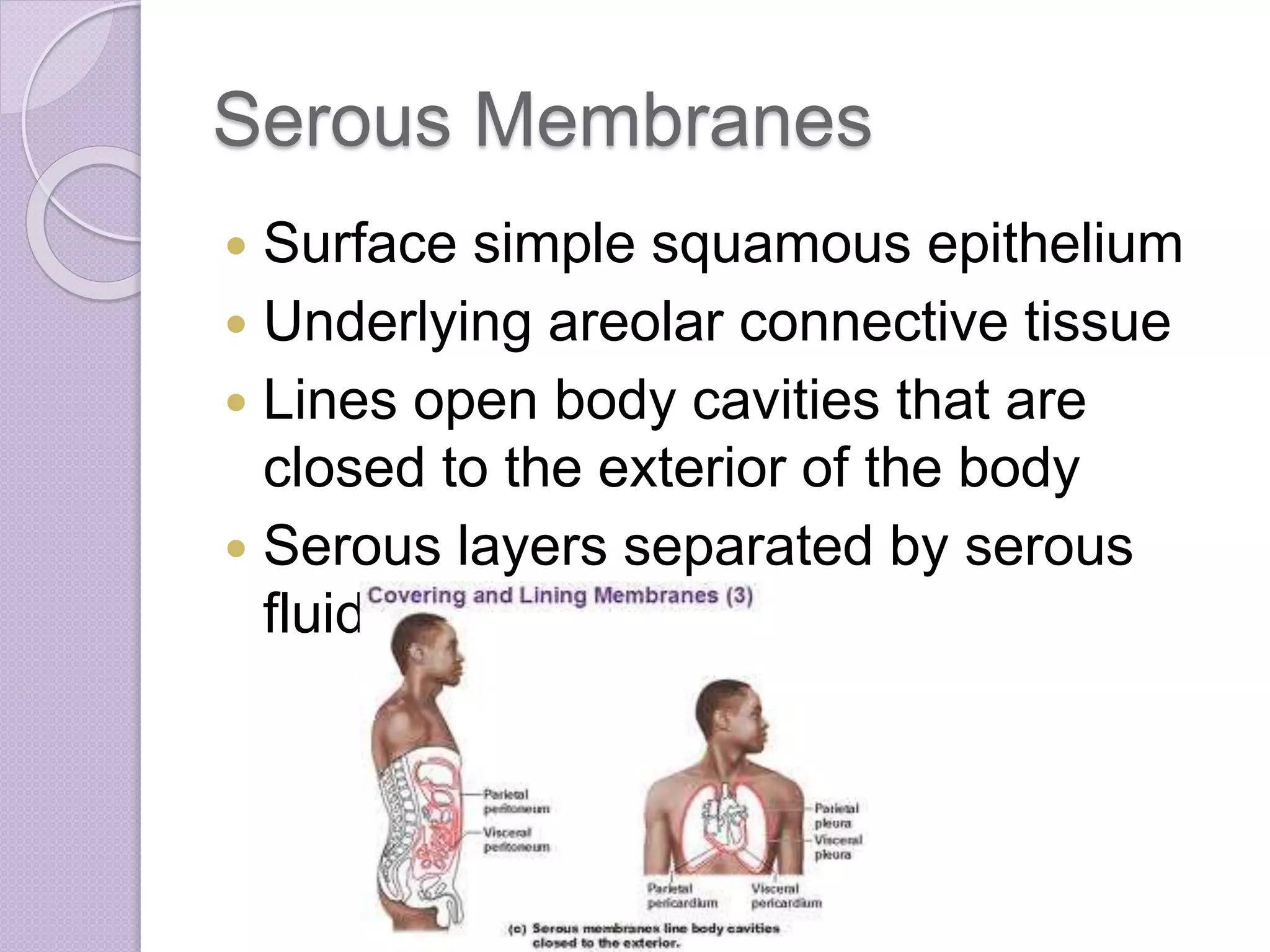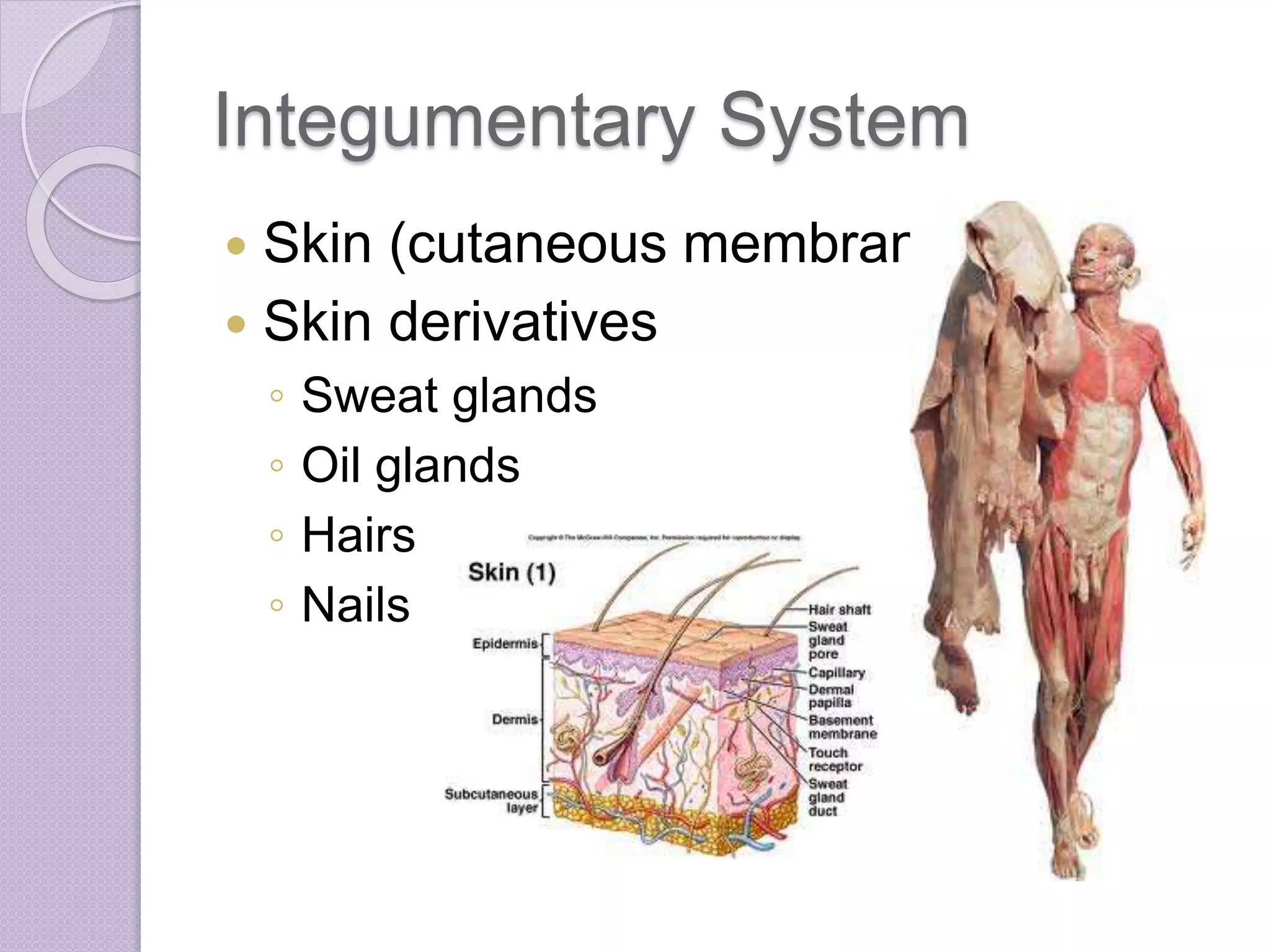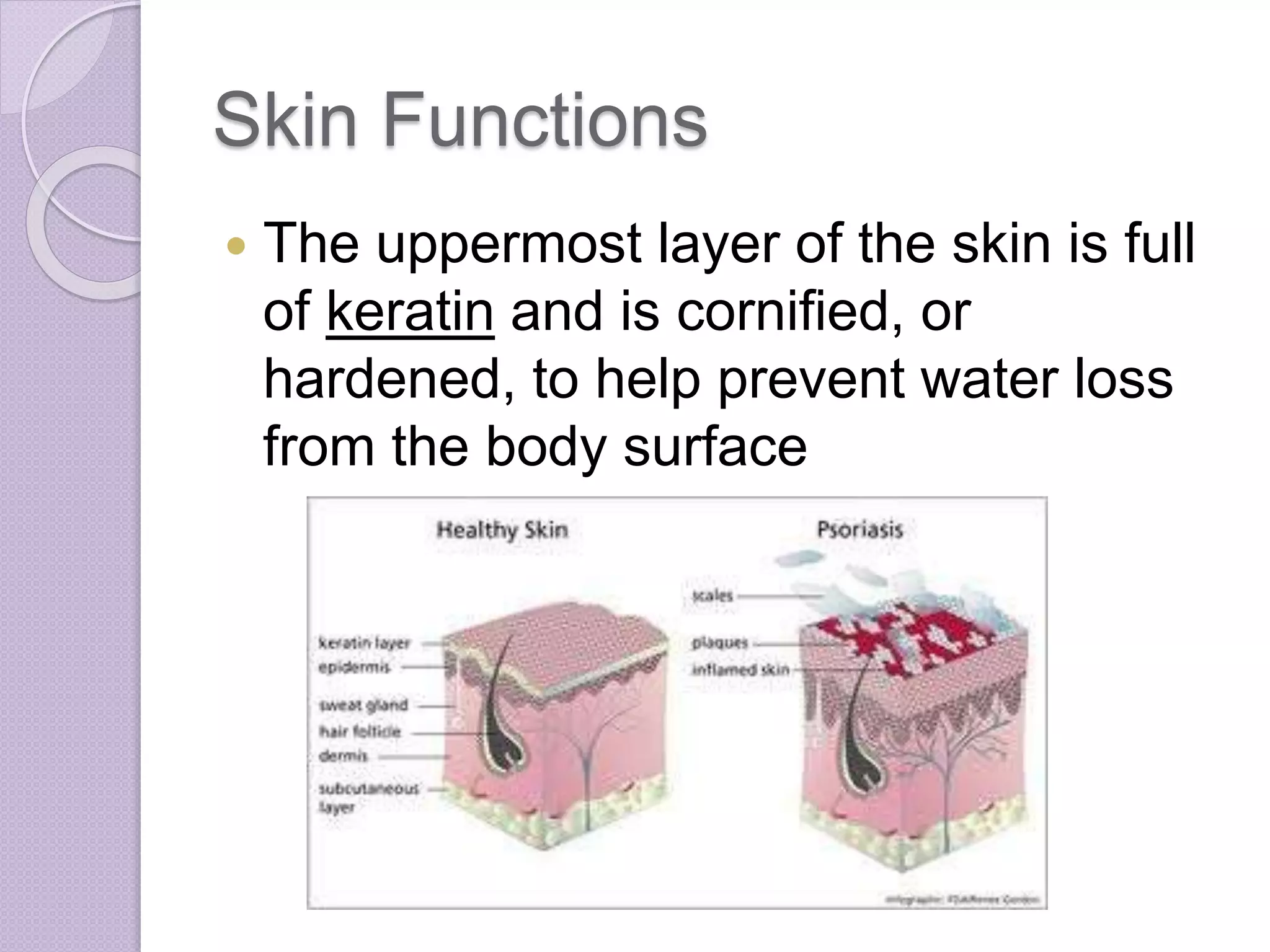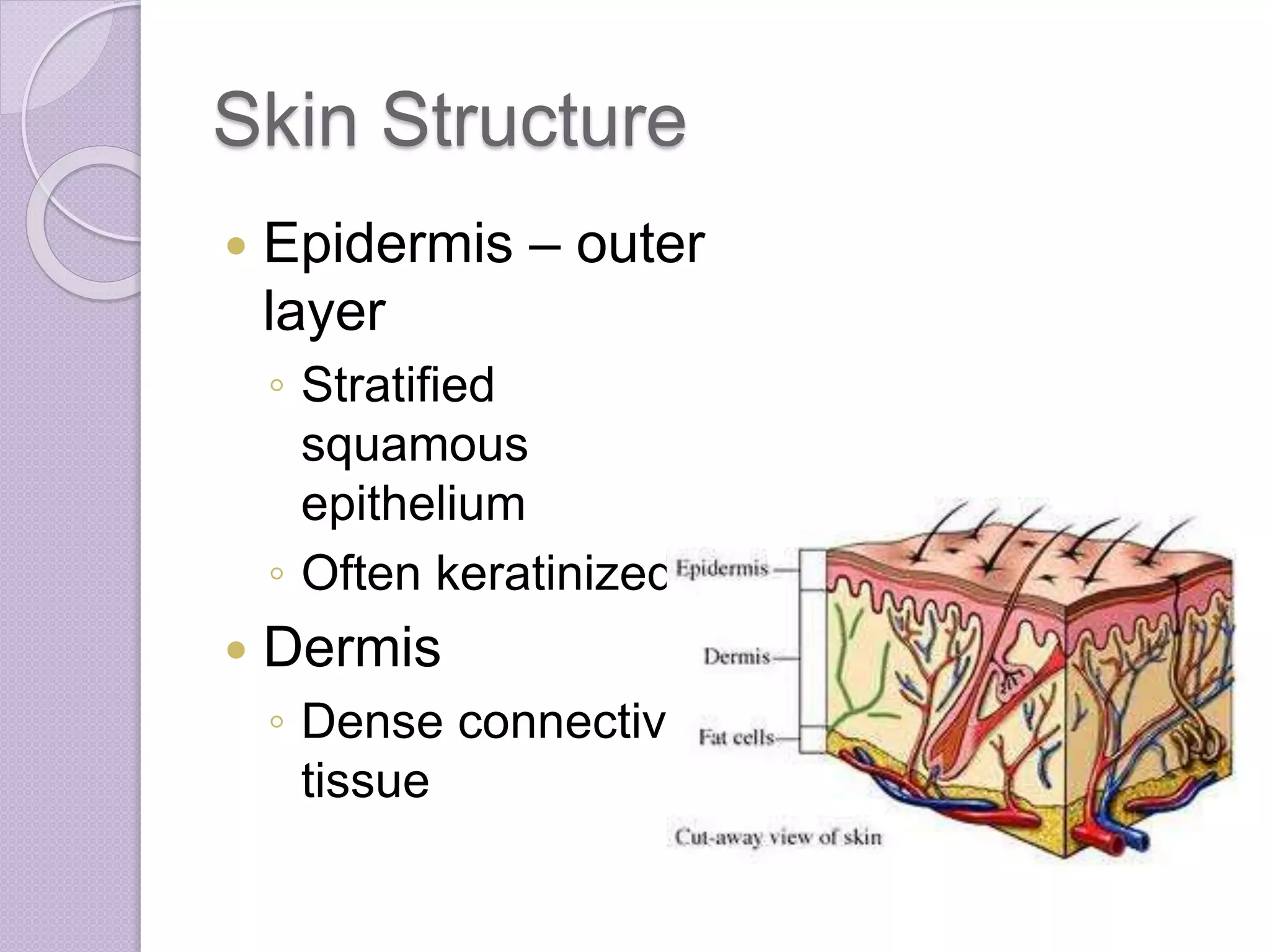Body membranes line body cavities and surfaces, and fall into two groups: epithelial and connective tissue membranes. Epithelial membranes include the cutaneous, mucous, and serous membranes which contain an epithelial sheet and underlying connective tissue. The skin is the cutaneous membrane and functions to protect the body, regulate temperature, and synthesize vitamin D. The skin has an outer epidermis and deeper dermis layer. Skin appendages like hair, nails, and glands aid homeostasis. Imbalances can include infections and allergies of the skin.


